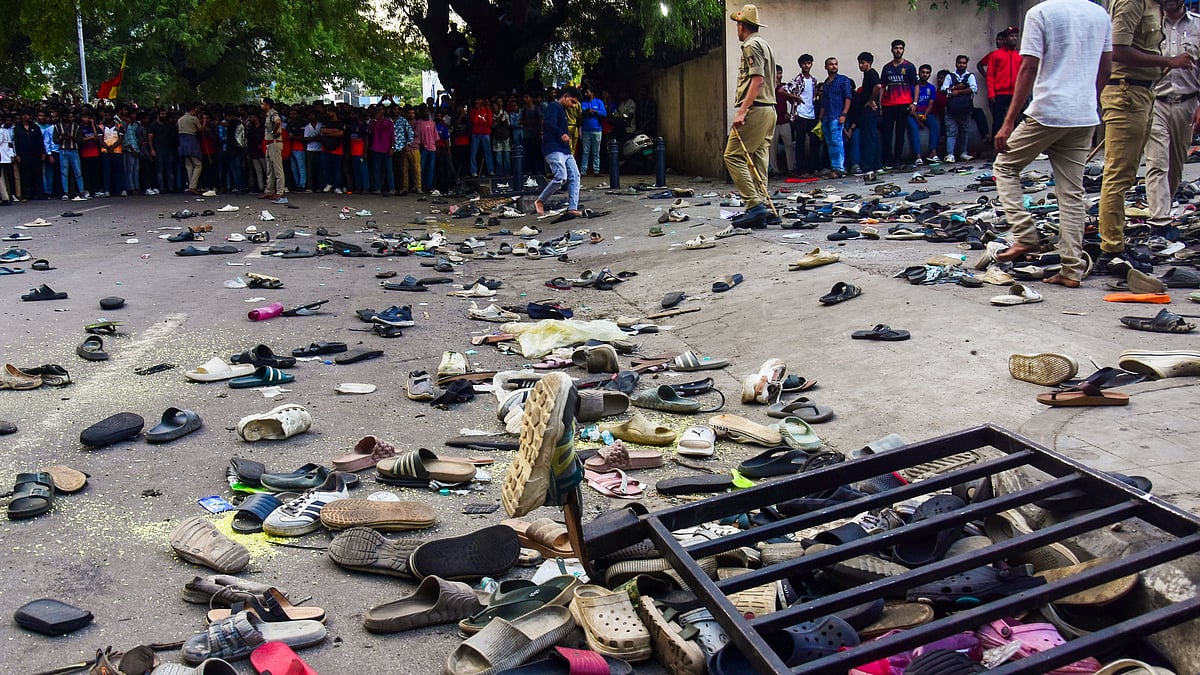The deadly stampede in Bengaluru during the Royal Challengers Bangalore victory celebrations has triggered police FIRs, the arrest of the team’s marketing head, the suspension of senior police officers and the institution of a judicial probe.
These actions may serve to mitigate public anger at the official incompetence that led to the tragedy in the short run, but Bengaluru’s catastrophe points to aggravating urban dysfunction and crowd management in India.
Karnataka’s capital has even otherwise come to symbolise civic paralysis under successive governments, and there was a lamentable lack of alacrity among authorities regarding the likelihood of chaos and mayhem at the RCB victory parade.
The threat of stampedes increasingly looms over several bottleneck sites across the country, both urban and rural. Religious gatherings and railway stations are distinct focal points, as the recent ghastly stampedes in Prayagraj during the Maha Kumbh, the New Delhi Railway Station in February, Tirupati in January, Hathras a year ago and Mumbai’s Elphinstone Road bridge in 2017 all show.
Scores of people died in these stampedes and others before them, but governments seem clueless in evolving a standard operating procedure for mega events. Evidently, sports and music concert venues should be added to the list of high-risk locations where scientific crowd management is often lacking.
The Hyderabad Police Commissioner expressed surprise that the RCB win was followed by a celebration in his city, jamming traffic and prompting police to violently disperse fans. If there is a lesson here, it is that in a populous country with growing means to travel and communicate, authorities must anticipate better and prepare for the unexpected.
The record shows that governments have not sufficiently acknowledged the challenge posed by staggering numbers gathering for events. After the New Delhi station disaster, Railways Minister Ashwini Vaishnaw told Parliament that the plan was to create holding areas for large crowds outside 60 railway stations and allow entry to only ticketed passengers when the train arrives at the platform.
This may not be a foolproof system, given the crush of people usually rushing towards trains with their baggage. Station design does not provide for such big numbers; information signs are poorly designed; and entry and exit points have not progressed beyond colonial-era dimensions.
Another remedial measure promised for all railway stations is redesigned foot overbridges of 40 feet and 20 feet width, to accommodate more people and prevent the kind of carnage witnessed at Elphinstone Road. Yet, these have not been taken up in mission mode with round-the-clock implementation and remain slow, business-as-usual projects.

Police forces need to professionalise and view themselves as enablers of events where people can expect safety and comfort. The single most effective intervention that India needs is in mobility—enabling the free flow of people on foot, a dramatic rise in public transport and curbs on individual automobiles converging on a venue.










